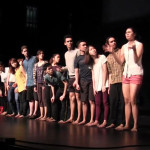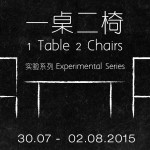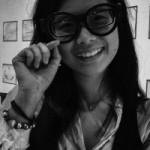“Loss-Layers”
Reviewer: Sam Kee
Performance: 16 January 2015
We were bathed in a sea of blood – Red – the moment we entered the black box. It felt painful watching each movement of the dance. The stark contrast between the scenes, heightened by the jarring sonic art and psychotic flashes of blinding white light, made me wince in pain.
This was how I participated in her struggle against the known and unknown.
Yum Keiko Takayama, the choreographer and dancer, engages us with her intense energy. Initially clad in a half-body zentai suit, the dancer is tabula rasa – we are unable to read her facial expression as she converts her body into a canvas for the visual projections. This constructed and meaningless vacuum – composed of illegible symbols – similarly sends the audience into erasure by stripping them of their reading abilities. The performer sheds layer after layer, and assumes new layers as she struggles against her environment, sometimes laughing hysterically in reaction to it. Layers are lost, identities are lost; only to assume new ones. The dancer puts on a mask of magnified emotions, allowing the various identities she assumes to be projected sharply.
Loss is closely associated with pain and fear. The fear of entering a dark abyss of nothingness after the loss, the pain when something is taken away from you and you have no power to prevent it. In this aspect, the use of butoh works well to contemplate the darkness of fear, loss and pain. Later in the post-show dialogue, someone in the audience reminded us that at its source, butoh stems from the ‘dance of darkness’ (暗黑舞蹈) in the time of post-World War II, reacting against the Western connotations of dance, and resisting fixity.
Yum commands excellent control over her physical contortions, at times with such precision that she appears to have been transformed into a non-human state; and in doing so generated a kind of fear of the unfamiliar. Other times, I catch glimpses of worldly pain and hysteria, reminding me our shared humanity. Together with the visual projections, there is a persistent portrayal of a living battle between her and the environment: shadows of a forest engulfing her, constraints of a cage trapping her, spaces closing up on her, reducing her freedom. When the performance reaches this stage, I can hardly call it a dance any more – but contemporary dance is often controversial this way.
Loss-Layers displays the essence of good theatre: existing in the interaction between the life embodied in the performer and the assistance of the onlooker. Fabrice Planquette, the man behind the concept, audio and visual presentation of Loss-Layers, reveals that the lack of any concrete manifestations and signifiers is deliberate – wanting the audience to complete this performance in their heads.
In the end, Yum seemed to have come out unscathed, whereas I, on the other hand, lost the battle.
Do you have an opinion or comment about this post? Email us at info@centre42.sg.
ABOUT THE PRODUCTION
LOSS-LAYERS by A.lter S.essio (France/Japan)
16 – 17 January 2015
Esplanade Theatre Studio
ABOUT THE REVIEWER
Sam Kee is currently helming the literary and visual arts section at artsrepublic.sg while putting her major in Mathematics to good use at an educational publishing house.





